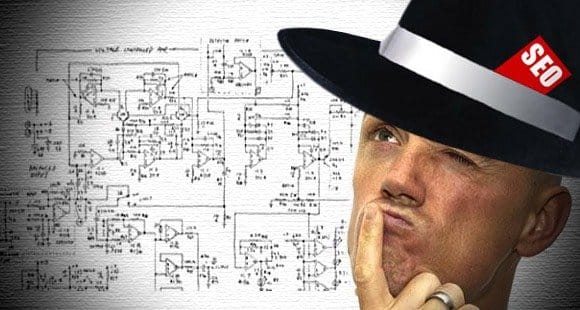Do Website Traffic Generator Programs Work?

SEO is a long and complicated process. Organic traffic takes forever to build. Quality content is expensive. Why not take a shortcut through it all and pick up a program to boost your traffic? Do those programs work, or would it be a waste of money?
Types of Programs
There are essentially two types of traffic generator software. The first is a type of robot that creates traffic for your website and nothing else. The second is a bit more advanced, a program that creates a link pyramid to boost your site SEO and pulls in organic traffic.
Traffic robots are generally cheap programs, primarily for one reason; their traffic is valueless. Yes, running one of those programs “works” in a sense, in that it boosts your pure traffic numbers. The problem is the quality of that traffic. If your visits are all coming from robots that bounce after a second and don’t click links, you’re not gaining any benefit.
SEO programs, on the other hand, are more expensive. This is because the traffic they generate is actual, real organic traffic. The problem here is that the method they use to bring in that traffic can solidly be classified as black hat. Google can and will demote sites that use such software, meaning your traffic spike is temporary at best.
Pure Traffic Generation
To start, let’s discuss the first option, the pure traffic generation robot. If you prefer, you can substitute a third party alternative, such as buying thousands of hits from Fiverr. Either way, you’re getting one of two things; robot traffic or clickfarm traffic.
Robot traffic is generally bad traffic. All but the most sophisticated robots simply load your page and leave. The majority of their processing power is spend cycling through proxies to make your traffic appear as though it comes from a variety of different sources. The thing is, all of this traffic has a high bounce rate and zero engagement; it doesn’t click links, it doesn’t read pages, it doesn’t scroll or anything else. It just loads the page. Functionally, all it does is increase a few numbers in your analytics and put a little strain on your server.
Sophisticated robots may click around your website and spend some time, but rarely do they bring much benefit. They still never leave comments or share on social media. Any comments you might receive from a robot typically come from third party spambots trying to use your site as a link to their sites, essentially making you the target of someone else’s efforts to do what you’re trying to do.
Clickfarm traffic is a little more sophisticated still, specifically because it’s not run by robots, it’s run by actual humans. The problem with this traffic is that it’s also largely valueless. Seen most often on Facebook, clickfarm traffic is why some of the biggest names on the social network have a huge following from Bangladesh, India or Egypt. Even when they’re USA-only brands.
Black Hat SEO
So, how about the black hat SEO robots? Software like Money Robot, for example? How does it work, and is it effective?
Money Robot is a piece of software that automates the standard processes behind common black hat SEO. Specifically, what it does is automates article spinning and posting to a network of blogs. All you do is plug in an article – generally one you steal from someone who worked to create it – and tack on your link and keywords. The software generates dozens of low-quality spun versions of that article and automatically posts them to a selection of the thousands upon thousands of blogs tied to the system.
The software claims high PageRank sites in its database, and some may be there, for all the good it does you. A high PageRank isn’t necessarily indicative of anything in the modern Internet. Still, if it matters to you, there it is.
The end result is that you spent the $70 monthly fee – or the $500 lifetime fee – for a piece of software that creates dozens of low quality spun blog posts and posts them on sites filled with other low quality spun blog posts. Or, if you want to put it in search terms, “Panda bait.”
The real question, though, is; does it work? Unfortunately, yes, the software certainly performs its purpose. With the click of a button – after a little configuration – you have content posted on dozens of blogs, all linking to your site. Until Google discovers and penalizes those blogs, those links read as legitimate. Your site will receive a boost, again, up until those links are penalized. When they are, your site will fall in the rankings or even acquire a Penguin penalty for bad link building.
At that point, you can either abandon the black hat way or you can start the cycle over again, with new blogs, new links and new sites all around. It’s a constant battle that some people are perfectly willing to fight. Black hat SEO isn’t illegal, after all.
A White Hat Alternative
In order to use a software suite like Money Robot, you need to already have a website you’re intending to make money from. So, consider that you already have that site. Rather than invest $500 in the lifetime fee for that software, how could you spend that money to create a long-lasting SEO campaign that works?
Well, your first option would be to contract an SEO firm. However, $500 won’t get you far with a legitimate firm. Some quality SEO professionals charge more than that per month, and are worth every penny. So, hiring a professional is out.
Well, what do you need to do what Money Robot is doing the legitimate way? You need blog posts in volume. $500 can get you a lot of blog posts from a content mill or cheap freelancer, though you aren’t necessarily going to get the best content. Still, it could be enough to last you a few months.
Alternatively, you can create the content yourself, a time-consuming task. Instead, spend the $500 on PPC. $500 can stretch quite a ways in, say, Facebook advertising, where you don’t necessarily need to spend more than $5 a day.
Okay, so the fact is, legitimate SEO is expensive in both time and money. The flip side, however, is that it’s long lasting. As long as you’re firmly within the rules, you’re not going to wake up one day and find your profits dropped to zero. With the black hat alternatives, you don’t have a long gradual rise; you have a mountainous range of peaks and valleys, profits and losses. There’s no guarantee your expensive tools are going to keep working months down the line; software developers move on to other projects and the methods they used become ineffective.
 ContentPowered.com
ContentPowered.com







